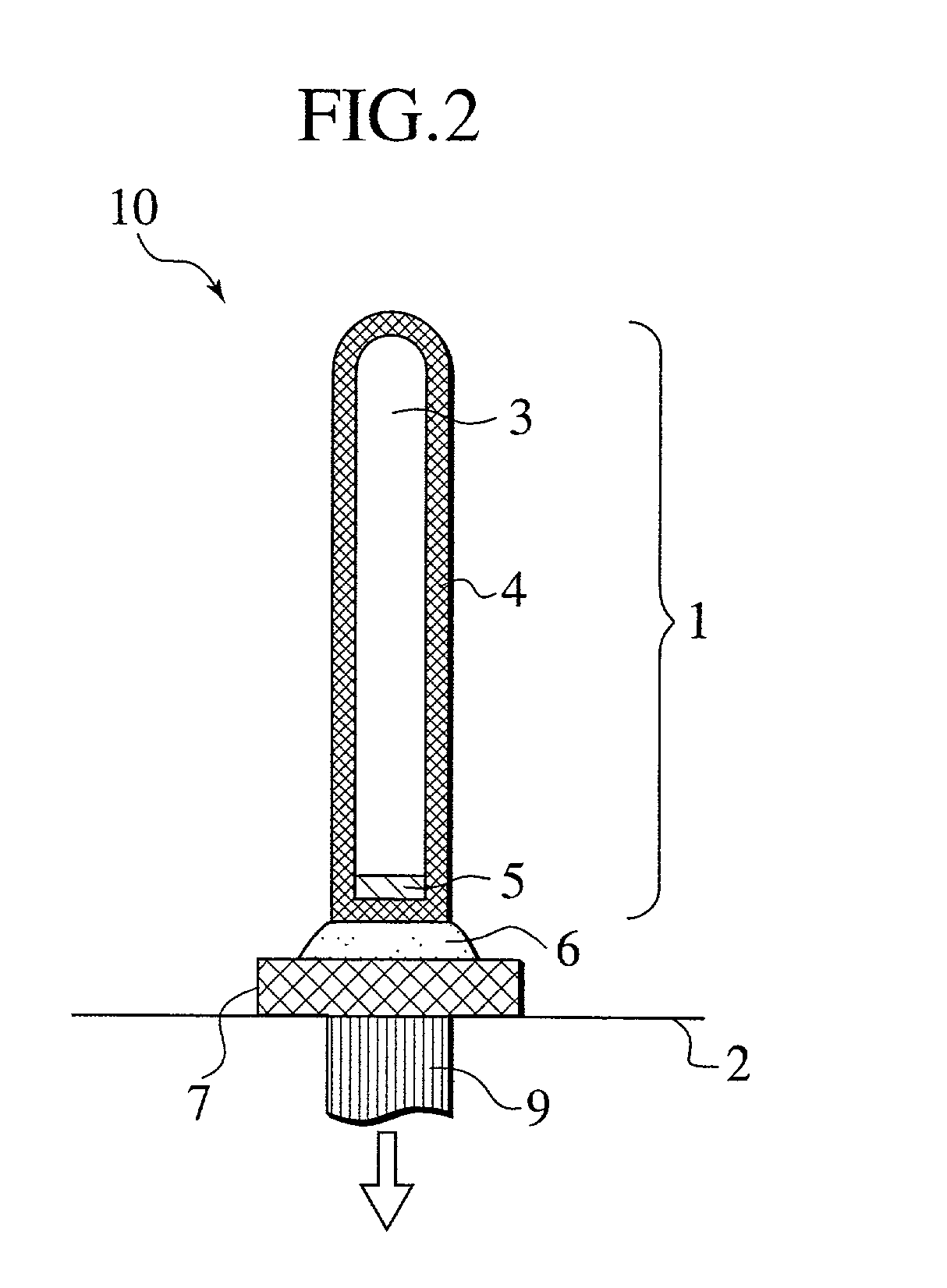Probe pin for testing electrical characteristics of apparatus, probe card using probe pins
- Summary
- Abstract
- Description
- Claims
- Application Information
AI Technical Summary
Benefits of technology
Problems solved by technology
Method used
Image
Examples
first embodiment
[0033] FIG. 2 illustrates a probe assembly 10 which includes a probe pin 1 for testing electric characteristics of, for example, a semiconductor device, and an electrode 7 connected directly to the bottom of the probe pin 1. The probe pin 1 comprises a single crystal silicon pin core 3, and a gold (Au) film 4 covering the entire surface of the silicon pin core 3. The probe pin 1 also has a nickel silicide (Ni.sub.2Si) film 5 at the bottom of the silicon pin core 3. Because the resistance of silicon is comparatively high, the tip and the side face (collectively referred to as "the first surface") of a silicon pine, which are brought into contact with a semiconductor wafer during a test or measurement, were conventionally coated with a low-resistance metal film. The feature of the probe pin 1 is that the bottom (referred to as the "second surface") of the silicon pin core 3 is also coated with a low-resistance film, for example, a gold (Au) film 4.
[0034] The bottom (i.e., the second s...
second embodiment
[0053] FIG. 5 illustrates a probe assembly 30 that includes a probe pin 31 for testing electric characteristics of, for example, a semiconductor integrated circuit, and an electrode 37 connected directly to the bottom of the probe pin by soldering. The probe pin 31 comprises a single crystal silicon pin core 33 and a gold film 34 covering the entire surface of the silicon pin core 33. Unlike the probe pin 1 of the first embodiment, the probe pin 31 does not have a nickel silicide (Ni.sub.2Si) film at the bottom. Accordingly, the second face (i.e., the bottom face) of the silicon pin core is directly coated with the gold film 34. The bottom of the electrode 37 is connected to the interconnection 39 extending inside the substrate 32, as in the first embodiment explained in conjunction with FIG. 2. The probe pin 31 is electrically connected to an external circuit via the electrode 37 and the interconnection 39.
[0054] FIG. 6 illustrates a process of fabricating the probe pin 31 shown in...
PUM
| Property | Measurement | Unit |
|---|---|---|
| Temperature | aaaaa | aaaaa |
| Electrical conductor | aaaaa | aaaaa |
| Electric properties | aaaaa | aaaaa |
Abstract
Description
Claims
Application Information
 Login to View More
Login to View More - R&D
- Intellectual Property
- Life Sciences
- Materials
- Tech Scout
- Unparalleled Data Quality
- Higher Quality Content
- 60% Fewer Hallucinations
Browse by: Latest US Patents, China's latest patents, Technical Efficacy Thesaurus, Application Domain, Technology Topic, Popular Technical Reports.
© 2025 PatSnap. All rights reserved.Legal|Privacy policy|Modern Slavery Act Transparency Statement|Sitemap|About US| Contact US: help@patsnap.com



